Tang Nano 9K FPGA is the third board from Sipeed based on GOWIN FPGA following the original Tang Nano board with 1K LUT and Tang Nano 4K launched last year with GW1NSR-LV4C (aka GW1NSR-4C) FPGA offering 4068 logical units and 64 Mbit PSRAM, plus an Arm Cortex-M3 hard processor.
As its name implies, the new board comes with 9K LUTs, as well as 64 Mbit PSRAM, 32 Mbit Flash, a micro SD card, and video I/O (HDMI, RGB LCD connector) that makes it suitable to run Verilog HDL code emulating a PicoRV32 RISC-V soft-core with all peripherals.
Tang Nano 9K FPGA board specifications:
- FPGA – GOWIN LittleBee GW1NR-9/GW1NR-LV9
- 8,640 logical units (LUTs)
- 6,480 flip-flop
- 17,280 bits shadow SRAM (SSRAM)
- 486 Kbit block SRAM (BSRAM)
- 64 Mbit PSRAM
- 608 Kbit user flash
- 2x PLL
- Up to 276x user I/O
- Storage – 32 Mbit SPI flash. MicroSD card socket
- Display I/F
- HDMI port
- RGB interface connector
- SPI interface connector
- USB – USB Type-C port for power and JTAG programming
- Expansion – 2x 24-pin headers with GPIOs, SPI, HDMI, PLL, clock, and power signals
- Debugging – On-board BL702 USB-JTAG and USB-UART for GW1NR-9, that offers features similar to Sipeed RV-Debugger Plus
- Misc – 6x User LED, 2x user buttons
- Power Supply – 5V via USB
- Dimensions – Approx 65 x 23 mm
Like other Tang Nano boards, the Tang Nano 9K FPGA board can be programmed with GOWIN IDE. While the documentation is currently only available in Chinese (English is coming soon), you’ll find a sample for the RGB and HDMI video outputs on Github, and Martoni’s HDMI interface for GameBoy DMG is apparently working on the board as well.
The comparison table below shows the difference between the three versions of Tang Nano boards.
Tango Nano 9K loses the Cortex-M3 core and support for the OV2640camera, but gains a MicroSD card, more display interfaces, a more complete debugger, and obviously extra logical units. If you wonder what you can do with the extra LUTs, the table below provides a starting point as GOWIN G1NR FPGAs can be used to run PicoRV32 soft core.
Tang Nano 4K would only be suitable for running a minimal PicoRV32 core without peripherals, but Tang Nano 9K can run any PicoRV32 core with all default peripherals, and you could create your own custom peripherals if needed as well, plus runs C code on top of the PicoRV32 soft-core. Sipeed links to the official PicoRV32 project on Github, but says the “PicoRV project running on Tang Nano 9K” is coming soon, so I’d take that it’s not available just yet.
Sipeed is selling Tang Nano 9K board on Aliexpress for $14.99 and up depending on the options, as there are four kits with displays from 1.14-inch to 7-inch.

Jean-Luc started CNX Software in 2010 as a part-time endeavor, before quitting his job as a software engineering manager, and starting to write daily news, and reviews full time later in 2011.
Support CNX Software! Donate via cryptocurrencies, become a Patron on Patreon, or purchase goods on Amazon or Aliexpress


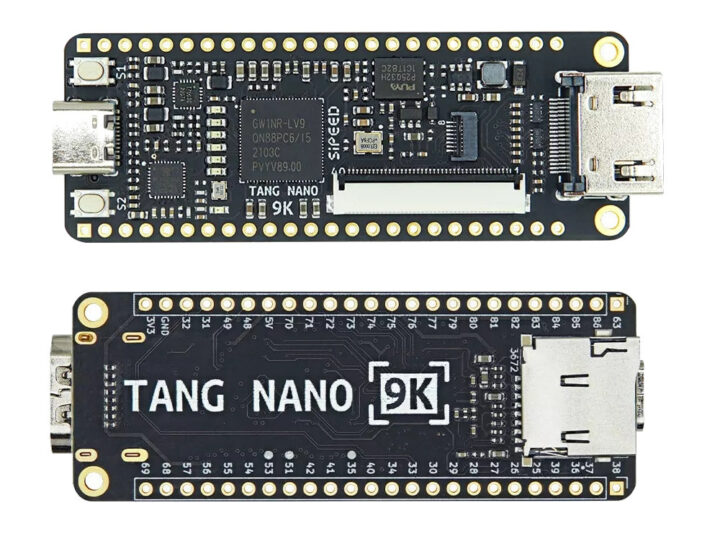
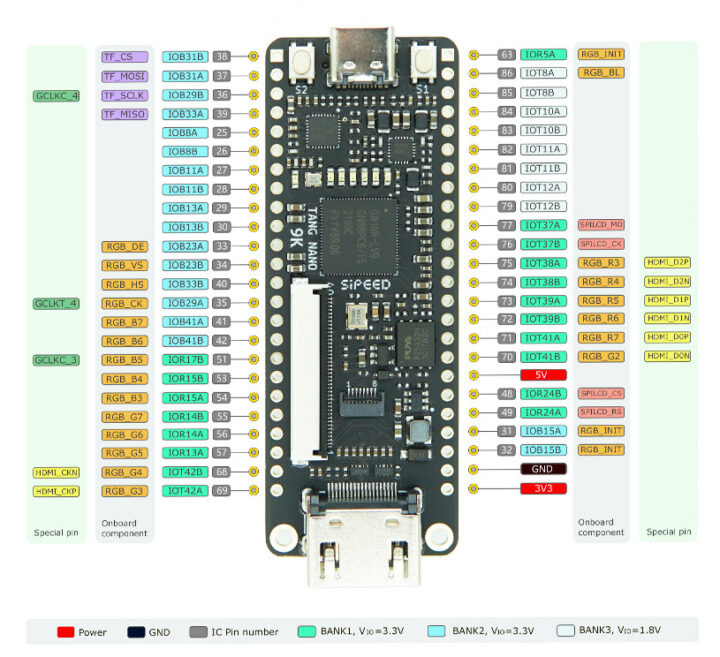
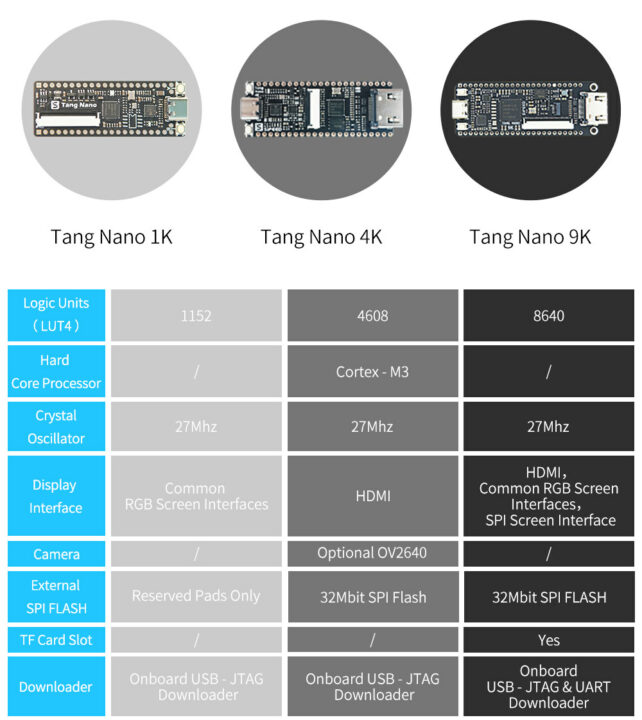
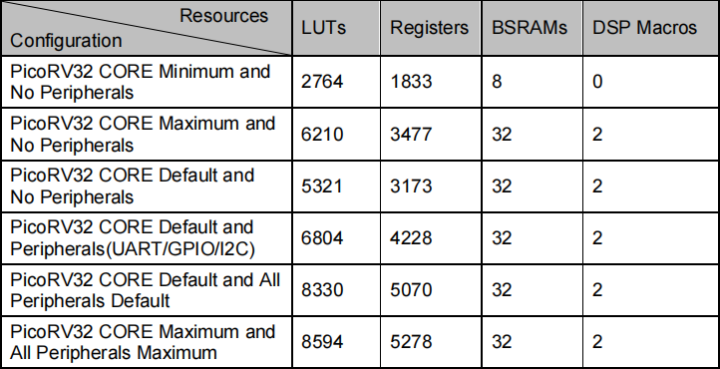
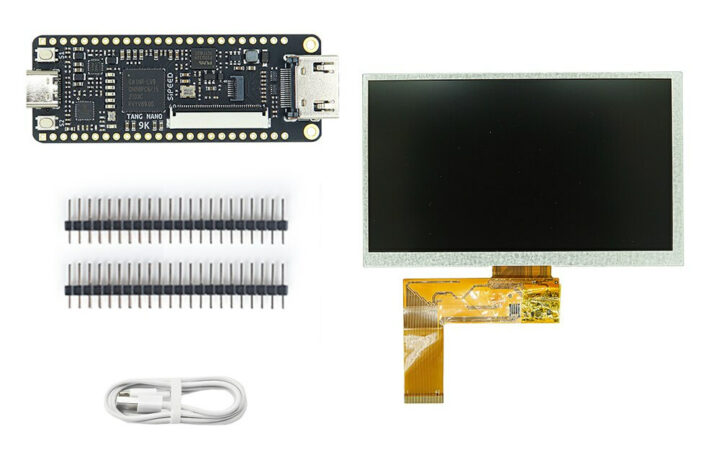



We have port simple version picorv on 9K:
https://github.com/sipeed/TangNano-9K-example/tree/main/picotiny
What exactly can be done with picotiny? Didn’t really understand the info on github
Can these chips be purchased anywhere for a reasonable price (maybe sipeed sells them) ? On mouser they are double the cost of this dev kit…
I’m actually digging the concept, its great to break Xilinx/Altera duopoly, but of course it looks very much like something to use to teach kids or students, nothing serious, very slow + wimpy. Again, which is fine for a first pass. Idk what documentation+IDE looks like, I’d worry there. Low bar also leaves room for copycats, which i’d welcome. C:
doc and ide you can refer to: http://www.gowinsemi.com.cn/down.aspx?FId=n14:14:26
Tang Nano series is for beginners, under 15$.
and we will release >100K Luts FPGA board in this year, called Tang Mega, possibly in $30~40
It could be nice to have 5V tolerant I/O in order to interface it to old hardware.